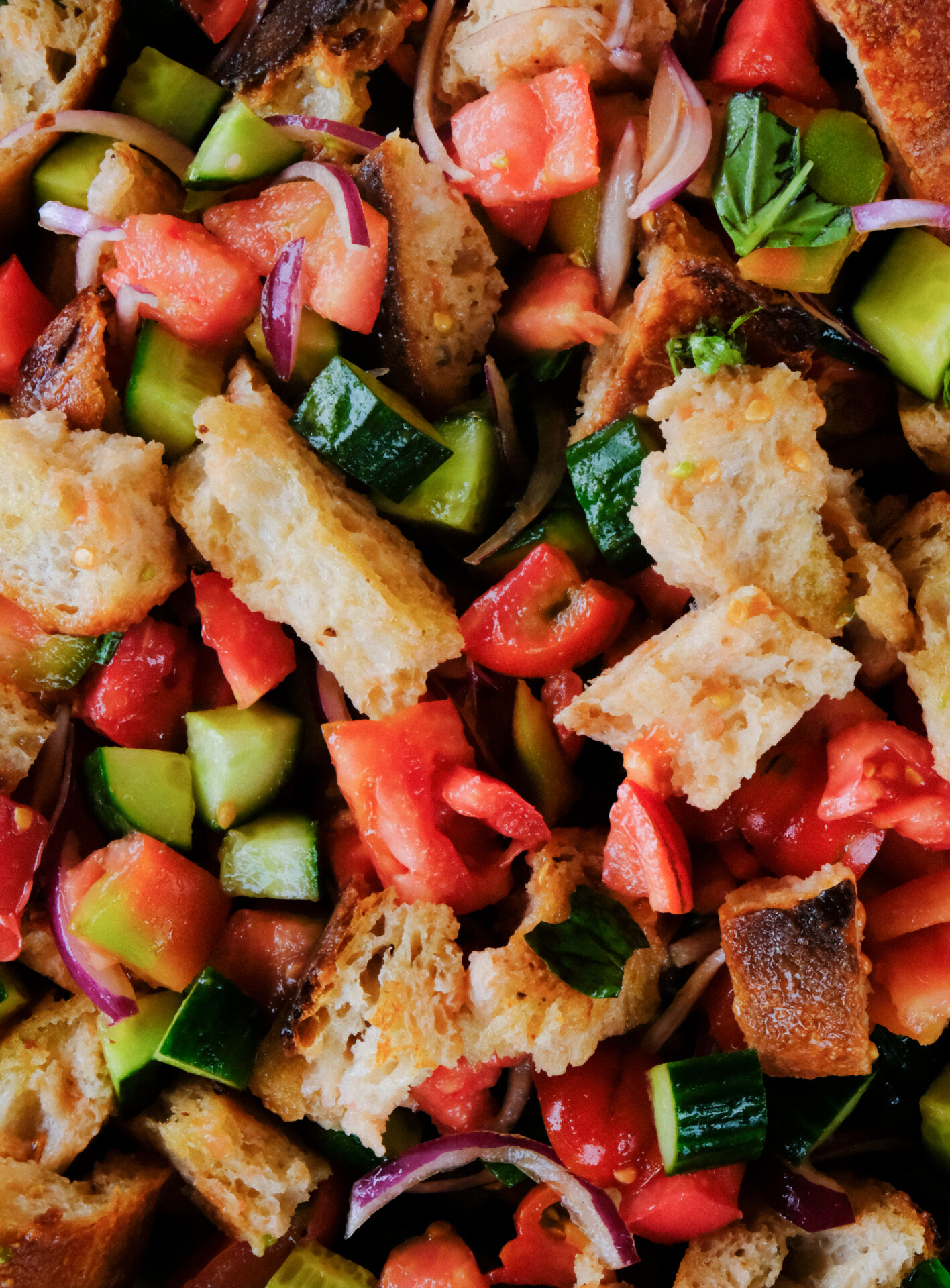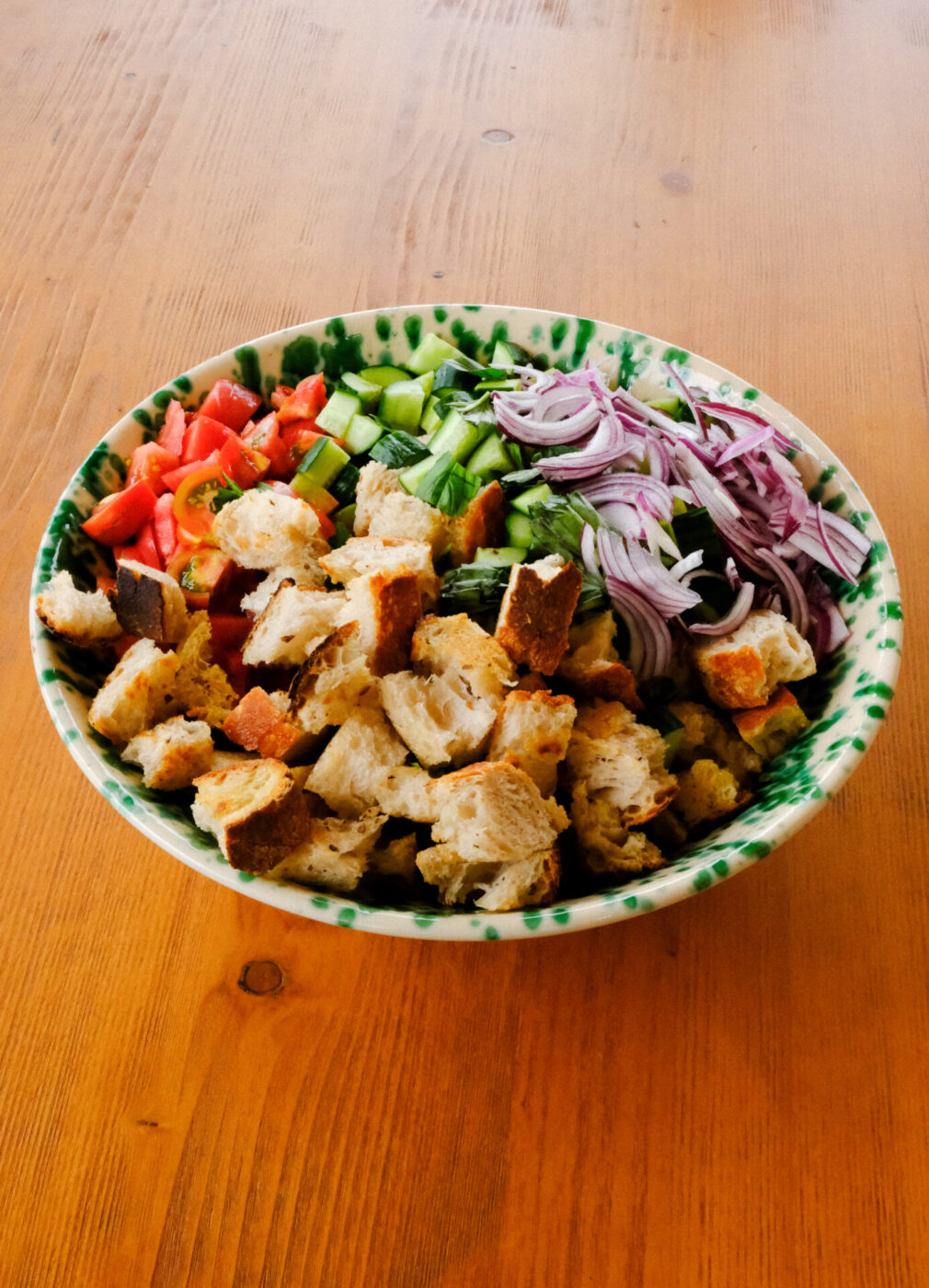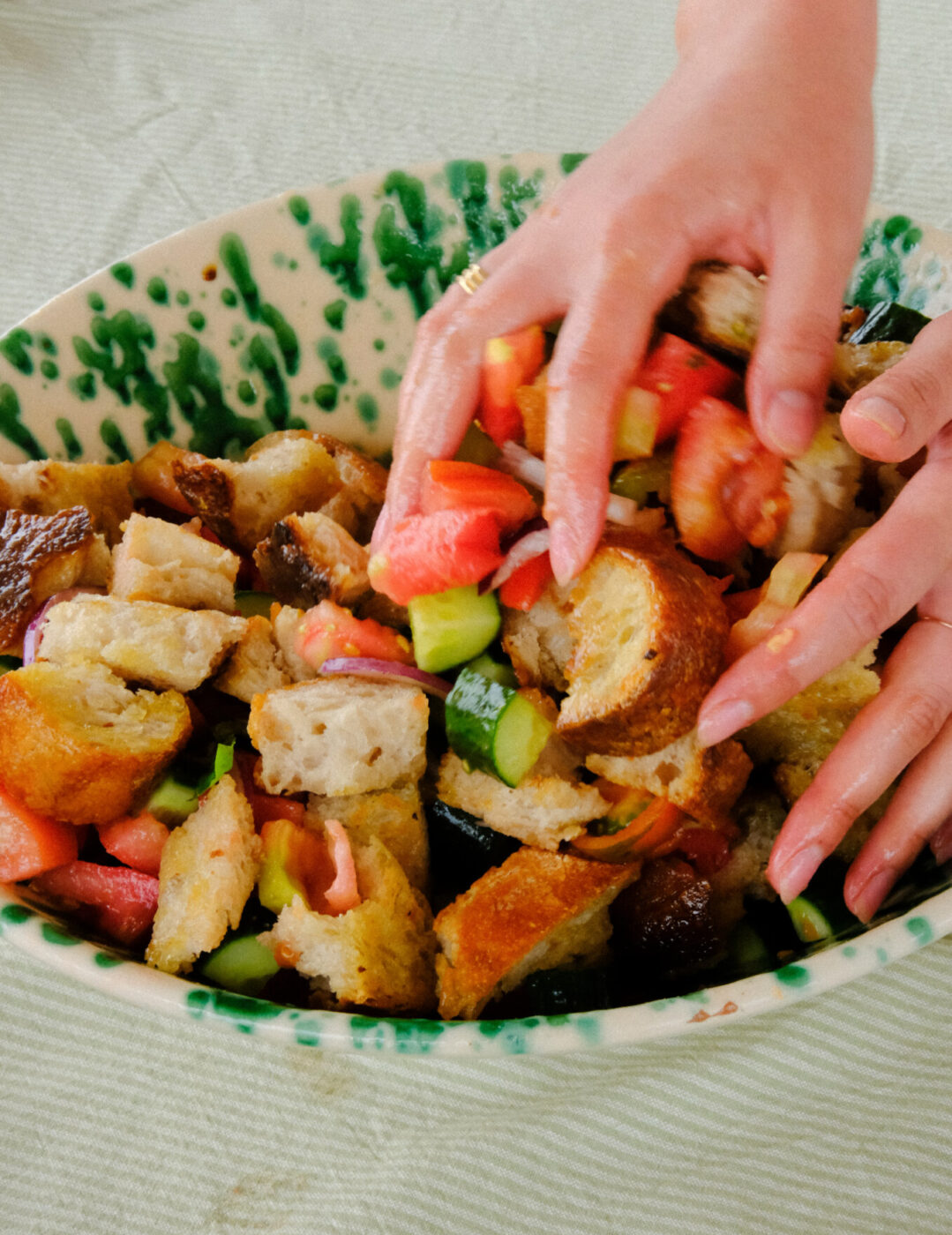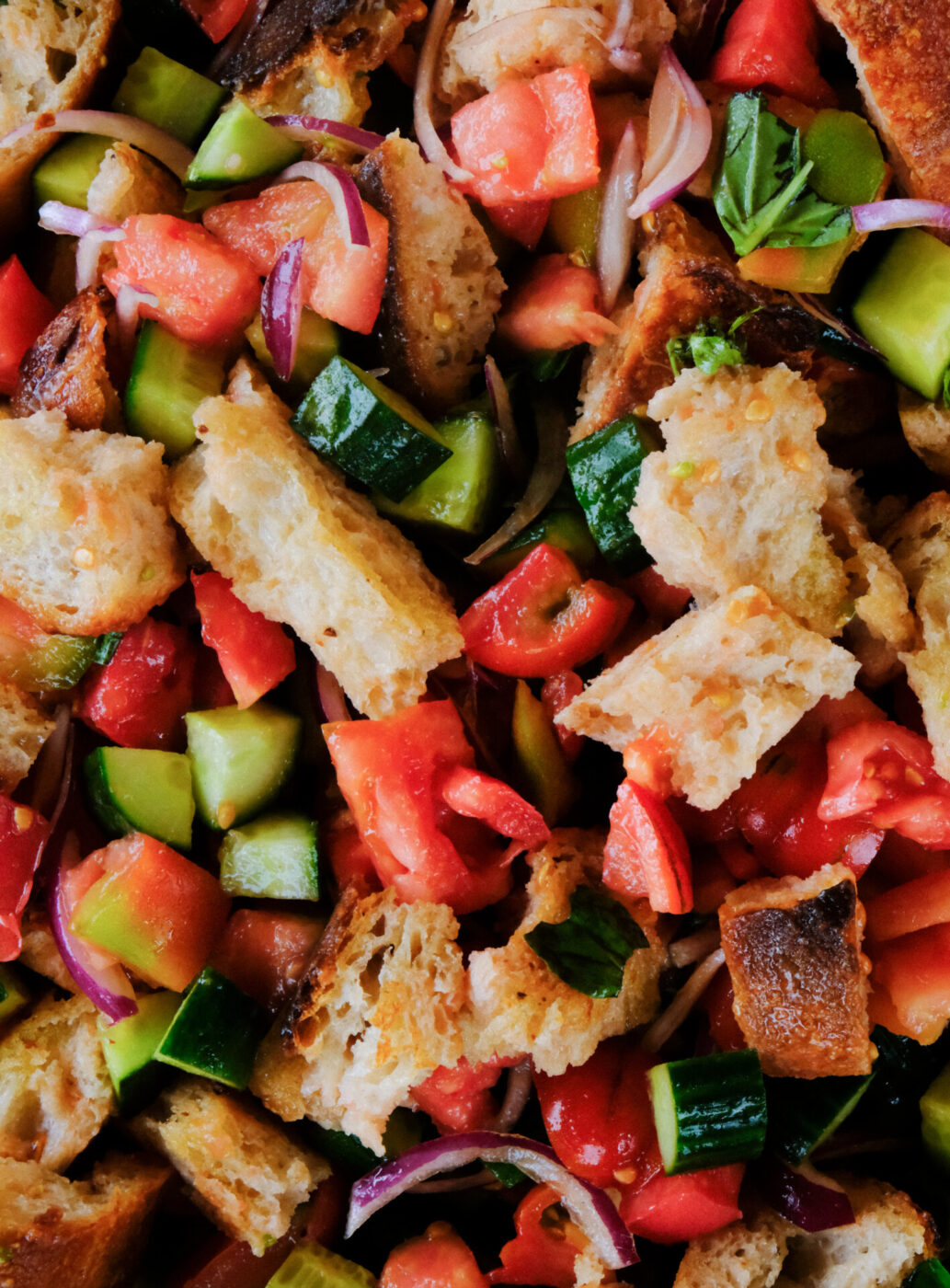If you’re reading this, you likely know that we take our food very, very seriously at Italy Segreta. It’s not uncommon to find us dissecting recipes and arguing about the optimal variety of tomato, or what the best way to cook broccoli is. And of course, when it comes to the infinite and minute variations on classic Italian dishes, the atmosphere at the office can get downright heated. In order to settle it once and for all, we’ll be taking the time to workshop and taste-test beloved recipes from Italy’s different cities and regions, in the aim of agreeing on the one, ultimate, reigning recipe. We’re not saying this is the most historically accurate or traditional way of cooking these recipes–there are plenty of other places you can go for those methods–this is just our highly opinionated editorial board’s collective favorite way. Approved by both the Italian and international contingents.
The Tuscan food pyramid is basically 50% meat, 50% carbs. The land-based culinary tradition of this region is very much inherited from cucina povera, so alongside lots of offal, there’s also a huge emphasis on using up every single ingredient at your disposal and stretching them to go as far as possible. Think pappa al pomodoro, crostini di fegatino, ribollita… But what about when it’s 40℃ and you just want something fresh? Panzanella is as close to a salad as the carnivorous city of Florence will allow to grace its menus, and, in true Tuscan fashion, it’s mostly made of repurposed stale bread. (Maybe there wouldn’t be so much leftover pane Toscano to use up if people actually enjoyed eating the infamously saltless and cardboardy stuff on its own.)
This was and is a favorite summertime food of farmers, who could use easily available produce like tomatoes, onions, and cucumbers, along with days-old bread, to make a nutritious meal that required very little prep and no real cooking. Which honestly is music to our ears in the hot months when the idea of turning on an oven or stirring over a hot stove in an apartment without AC sounds like a task fit for Dante’s tenth circle of hell.
A traditional panzanella takes leftover Tuscan bread, torn into bite-sized chunks, and soaks it in water to rehydrate it before tossing it with tomatoes, cucumbers, onions, and basil, with a good glug of olive oil and red wine vinegar (a blessed byproduct of the region’s wine harvests). The beauty of panzanella is that it can be served hot, cold, or at room temp, and the longer it all sits out together, the better the flavors develop. Our version swaps out the saltless Tuscan bread for whatever salted bread you happen to have on hand (anything works, but the better the bread, the better the panzanella). We like to toast our bread a tiny bit in a skillet or the oven, to add a crispy-gone-soggy crunch. The beauty of this recipe is that there isn’t really a recipe, but here are some guidelines; feel free to adjust the exact quantities to your liking.
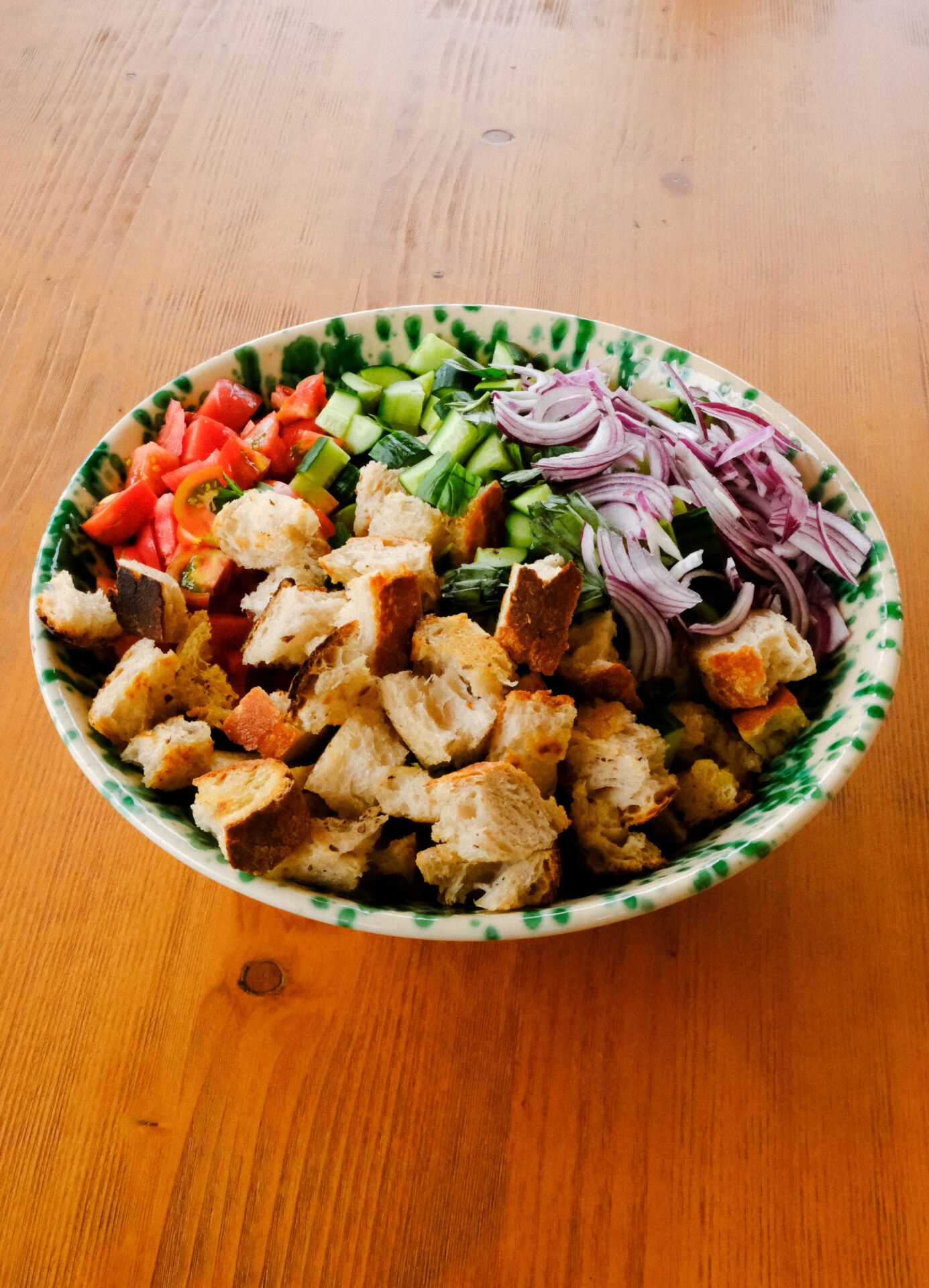
ITALY SEGRETA’S PANZANELLA
Serves 4
INGREDIENTS
- A loaf’s worth of stale bread (any kind you have on hand; the point of this is to use up leftovers…but we like sourdough best)
- 12-15 marinda tomatoes, 8-10 Roma tomatoes, or 4-5 Cuore di Bue tomatoes (we like marinda best, but, again, feel free to use whatever’s available)
- 1 large red onion
- 3 large cucumbers
- 1 large bunch fresh basil
- Extra virgin olive oil
- Red wine vinegar
- Salt and pepper, to taste
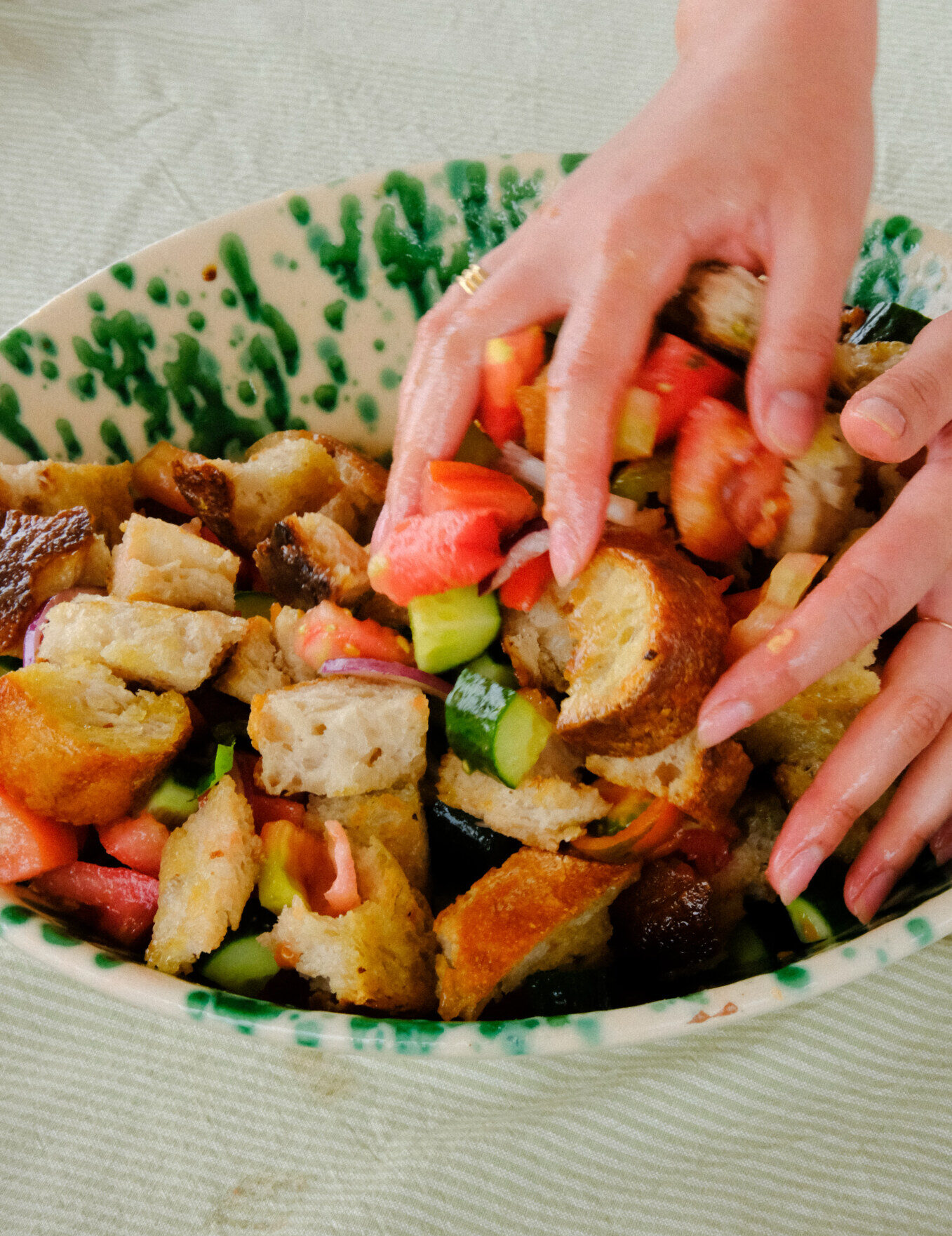
Panzanella
PREPARATION
- First, slice the onion into very thin strips, and transfer them to an ice bath. This will take out some of the bite from the onion and give them a softer, sweeter taste. Let sit in the fridge for at least 20 minutes while you prepare the rest.
- Tear your bread into small chunks; tearing the bread rather than cutting it is important for texture and creates a greater surface area to soak up all the yummy juices. Put the bread in a bowl, and sprinkle a little bit of water over it. The pieces should all be wet to the touch, but not saturated. Let it sit for about 15 minutes or until the water has rehydrated the bread and it feels soggy, but not mushy. If you’re using fresh bread, there’s no need to soak it, so skip this step.
- In the meantime, dice your tomatoes and cucumber. Pick your basil, smack it between your palms to release the aroma, and tear up at least 20 or so leaves.
- Now here’s our special trick: once the bread is hydrated, heat a little bit of olive oil in a skillet and toss in the bread, keeping the heat on medium-high so that the edges of the bread begin to turn crispy and golden brown, but the rest of it remains soft and spongy. Some pieces will be more toasted than others and that’s ok, that’s what you’re looking for. If you prefer, you can also do this in the oven–just douse your bread in a good amount of olive oil and toast it on a sheet tray at 180°C (350°F) until golden, about 10-15 minutes.
- Transfer all the ingredients to a bowl, drizzle with a big glug of olive oil and red wine vinegar, and sprinkle with salt and pepper. Give it a good toss with your hands, making sure that everything is mixed well.
- You can eat it right away, but we recommend letting it sit either in the fridge or at room temperature for about an hour, or up to overnight, so that the bread can sop up the juice from the tomatoes, and the cucumber and onions can lightly marinate in the vinegar.
